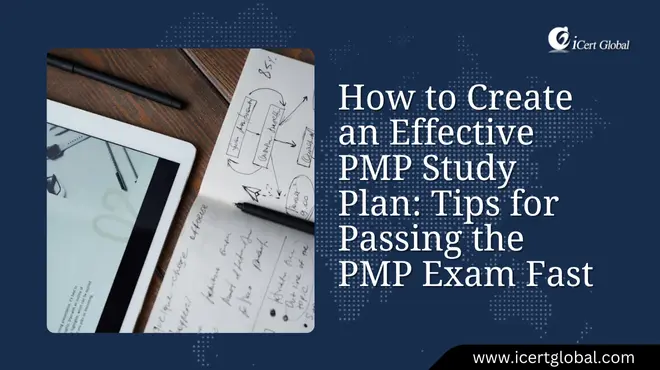
How to Create an Effective PMP Study Plan:
Create an effective PMP study plan for 10+ year professionals: master exam mindset, key project management tools, and
Stop the slow career climb. Get the integrated program that takes you from practitioner to leader in record time.
You're stuck in the middle - too experienced for entry-level quality roles, but lacking the credentials for senior process improvement positions. You watch Lean Six Sigma Green Belt professionals handle basic projects while Black Belts lead strategic initiatives worth crores. You're capable of both but certified for neither. Meanwhile, combo-certified professionals are fast-tracking into Continuous Improvement Manager and Operational Excellence Director roles by demonstrating both tactical execution and strategic leadership in half the time. Your applications get rejected because you don't check both boxes, and internal opportunities go to those who invested in comprehensive certification. That changes now. This isn't two separate courses duct-taped together. Our Lean Six Sigma Combo program is an integrated pathway designed by Master Black Belts who've led transformations at Saint Louis, MO manufacturing giants and global capability centers - they understand that real process improvement requires both Green Belt problem-solving speed and Black Belt statistical depth. They've structured this program to build your capability progressively: master DMAIC fundamentals, certify through our Lean Six Sigma Green Belt course, then immediately advance to complex statistical methods and leadership without repeating content or wasting time. Unlike programs that make you complete Lean Six Sigma Green Belt training, wait months, then start Black Belt from scratch, we build complete improvement professionals efficiently. You'll learn to execute rapid improvement projects using basic statistical tools, then progress to designing experiments, performing multivariate analysis, and leading cross-functional teams through transformations that generate documented six-figure savings. The dual certification is the proof - the real value is becoming the versatile expert who can both execute tactical improvements and architect strategic transformation programs. We've built this for ambitious professionals who want maximum credentials in minimum time without compromising rigor. Consecutive training modules with flexible weekend and evening options, both levels fully interactive with separate project requirements. Every session recorded. Beyond the training, you get Green Belt and Black Belt project templates used in actual deployments, Minitab proficiency for both levels, 24/7 expert support, and dedicated mentoring for both your Green Belt and Black Belt projects - the dual project requirement that derails most combo candidates who attempt this alone. If you've ever wondered about Lean Six Sigma Green Belt certification cost or the Lean Six Sigma Green Belt salary advantage - it's simple: the return on investment is exponential. You're not just earning two credentials; you're building a career that scales from execution to leadership.
Progress directly from Lean Six Sigma Green Belt fundamentals into advanced Black Belt strategies without interruption. Each concept in our Lean Six Sigma Green Belt course builds upon the previous one for deeper mastery and practical application in real-world projects.
Compress a multi-year development cycle into months, positioning yourself for senior roles faster than peers taking the traditional, piecemeal approach.
Invest once in a comprehensive program and save up to 30% compared to enrolling in separate Green and Black Belt courses, maximizing your training budget.
Learn from certified MBBs who understand the full spectrum of process excellence, from shop-floor Kaizen events to boardroom strategy deployment.
Receive continuous, one-on-one coaching for both your mandatory Green Belt and Black Belt projects, ensuring a 100% completion and certification rate.
Learn one consistent, industry-aligned Lean Six Sigma methodology, integrating problem-solving frameworks used across top organizations. Avoid the confusion of mixing content from separate Lean Six Sigma Green Belt and Black Belt training providers.

Get a custom quote for your organization's training needs.
Master process mapping, basic statistical analysis, root cause identification (Fishbone, 5 Whys), and FMEA to successfully lead and deliver well-defined improvement projects.
Go beyond the basics to master hypothesis testing, regression analysis, ANOVA, and DOE, allowing you to solve complex problems with multiple variables.
Systematically optimize processes by identifying the critical input variables that impact performance, moving beyond inefficient trial-and-error.
As you progress from Green Belt to leadership level, you'll learn to manage resistance, build coalitions, and communicate the financial impact of improvements. This skillset enhances your value and directly influences Lean Six Sigma Green Belt salary growth across industries.
Learn how to calculate and validate hard savings, soft savings, and the Cost of Poor Quality (COPQ) methods recognized by finance departments and auditors worldwide. This financial fluency is a hallmark of effective Lean Six Sigma Green Belt certification professionals.
Learn to manage a portfolio of improvement projects, align them with business strategy, and effectively coach and mentor Green Belts to build organizational capability.
If you are committed to a career in operational excellence and want the fastest, most comprehensive path to a leadership role, this program is designed for your ambition.


Bypass the typical multi-year gap between Green and Black Belt, making you eligible for senior roles faster.
Gain the ability to both execute projects flawlessly and design high-level transformation strategies.
Enter the job market with a Black Belt credential from day one, skipping the intermediate Green Belt pay scale.
Lead strategic initiatives and mentor the next generation of Green Belts to drive organization-wide excellence.
The Lean Six Sigma Green Belt + Black Belt Integrated Certification is structured to take you from foundational understanding to expert-level mastery. There are no prerequisites to begin the training - everything you need to progress from Green Belt to Black Belt is included within the program.
No Prior Experience Required to Start: The program begins with the Green Belt curriculum, providing the complete foundation needed for success.
Completion of Green Belt Project: You must successfully complete your mentored Green Belt project before you can be awarded your Black Belt certification. This ensures you have practical experience applying the fundamentals.
Led & Completed Black Belt Project: You must then lead a second, more complex improvement project demonstrating the application of advanced Black Belt tools and delivering substantial financial impact.
Completion of Full Training & Exam: You must complete the entire 32 hour integrated curriculum and pass both the Green Belt and Black Belt certification exams.
Master essential graphical tools that help distinguish symptoms from true root causes. Learn to apply Pareto charts, histograms, box plots, and scatter plots to visually identify data patterns and relationships that guide impactful solutions.
Facilitate effective brainstorming and problem-solving sessions. Master the 5 Whys and Fishbone (Ishikawa) diagrams to uncover the true drivers of process problems.
Move from opinion-based debates to data-driven conclusions. Learn the fundamentals of hypothesis testing and perform basic statistical tests, like the 2-Sample t-test, to validate potential root causes with confidence.
Learn structured techniques for brainstorming effective solutions that go beyond obvious fixes. Master tools like the PICK chart and impact/effort matrix to prioritize solutions that deliver the biggest results.
Implement proven Lean solutions to eliminate waste and improve flow. Learn the fundamentals of 5S for workplace organization, basic mistake-proofing (Poka-Yoke), and how to conduct a small-scale Kaizen event.
Avoid large-scale failures by testing your solutions on a smaller scale first. Learn how to design and execute a pilot test, analyze results, and create a robust implementation plan for rollout.
Learn to distinguish between normal process variation and true problems. Design and implement basic control charts (X-bar & R, I-MR, P-charts) to monitor improved processes and ensure stability.
Create an effective control plan to ensure your improvements stick. Learn to develop standard work instructions and response plans so teams know exactly what to do when processes deviate.
Properly close your Green Belt project by quantifying benefits, documenting lessons learned, and handing over the improved process to the process owner for long-term success.
Identify projects that align with strategic business goals. Refine your chartering skills to secure executive sponsorship, funding, and cross-functional resources for complex initiatives.
Go beyond basic VOC. Learn advanced techniques like Kano analysis, conjoint analysis, and MaxDiff studies to prioritize conflicting customer needs and develop a data-driven understanding of satisfaction drivers.
Navigate complex organizational dynamics and manage resistance effectively. Strengthen your change leadership and communication planning skills to drive enterprise-wide transformation.
Achieve mastery over data integrity. Quantify measurement error for complex scenarios and confidently interpret %GRR, discrimination ratios, and distinct categories to validate system reliability.
Go beyond basic capability indices. Master analysis for non-normal distributions and account for multiple specifications, small samples, and real-world complexities.
Design robust data collection plans with advanced sampling methods like stratified, systematic, and cluster sampling. Determine the precise sample sizes needed for complex statistical tests.
Command the full range of statistical tests including t-tests, ANOVA, chi-square, proportion, and non-parametric alternatives. Learn to distinguish between statistical and practical significance.
Build and validate predictive models using linear, multiple, and polynomial regression. Interpret R-squared, residuals, and identify violations that could compromise results.
Deconstruct complex problems using Multi-Vari charts to reveal positional and cyclical variation patterns, enabling advanced root cause sessions beyond surface-level analysis.
Master DOE principles by designing and executing full and fractional factorial experiments to identify key factors and interactions that drive performance.
Use Response Surface Methodology (RSM) to find optimal process settings. Master central composite and Box-Behnken designs and balance multiple objectives with desirability functions.
Design robust, error-proof solutions using advanced Lean tools like Value Stream Mapping and SMED. Learn Design for Six Sigma (DFSS) principles to embed quality into new processes.
Design comprehensive control strategies for complex systems. Learn when to use advanced SPC techniques like EWMA and CUSUM charts and how to establish effective response plans.
Create resilient control plans and mentor Green Belts to build a culture of sustainable process excellence across the organization.
Quantify and validate project impact using finance-approved methods. Prepare compelling executive presentations that communicate results in business language, not just statistics.

Our experts are ready to help you with any questions about courses, admissions, or career paths. Get personalized guidance from industry professionals.
"PMI®", "PMBOK®", "PMP®", "CAPM®" and "PMI-ACP®" are registered marks of the Project Management Institute, Inc. | "CSM", "CST" are Registered Trade Marks of The Scrum Alliance, USA. | COBIT® is a trademark of ISACA® registered in the United States and other countries. | CBAP® and IIBA® are registered trademarks of International Institute of Business Analysis™.


